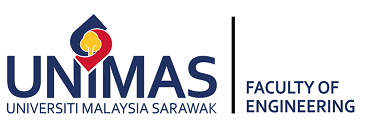Chee Khoon Ng, Hoo Tien Nicholas Kuan, Leonard Lik Pueh Lim, Sim Nee Ting, Idawati Ismail
Faculty of Engineering, Universiti Malaysia Sarawak, 94300 Kota Samarahan, Sarawak, Malaysia
E-mail:
Abstract
The ferrosilicon and manganese alloys production in Samalaju Industrial Park generates abundant of by-products known as silica fume and manganese slag. These by-products are categorised as scheduled wastes by the Department of Environment (DOE). Manganese slag has been found to posses pozzolanic properties and therefore suitable for usage in concrete mix. This proposed research will focus on utilising these waste materials in the production of concrete and/or geopolymer concrete. The mechanical and durability properties will be determined for the optimum mix of maganese slag-cement concrete and geopolymer concrete. Leaching test will also be carried out to identify the environmental impact of using these types of concrete in building construction. A life-cycle cost analysis will also be carried out to compare the cost of using maganese slag-cement concrete and/or geopolymer concrete compare with conventional concrete in building construction.
The use of manganese slag as pozzolanic material in concrete mix is still very profound to the best knowledge of the authors. The percentage of ordinary Portland cement that can be replaced by manganese slag without compromising the material properties of concrete remain unknown. Furthermore, the research on manganese slag in geopolymer concrete is even more scarce. The ferrosilicon and manganese alloys production in Samalaju Industrial Park generates abundant of by-products known as silica fume and manganese slag. These by-products are categorised as scheduled wastes by the Department of Environment (DOE). If the manganese slag is found to be applicable in cement blend and concrete production through this research, then the benefits are two-fold, i.e., recycling waste and wealth creation.
Some preliminary studies on utilising silicomanganese slag as replacement material had been carried out by Frias et al. (2006) and Altun & Yılmaz (2002) with 5% to 45% of replacement. It was found that the 7th day compressive and flexural strengths of the mortars had been compromised by 10-25% but the effect was less profound at 28th and 90th day strengths. It is important to note that this study was carried out on mortars with limited variation on percentage of replacement. Therefore, there is still a need in research of actual concrete behaviour with more variation in replacement percentage in order to utilise this waste material (manganese slag) efficiently.
In a separate study conducted by Wang (2017), it was found that manganese slag mixing with fly ash has a potential application in geopolymer concrete through alkali activation. However, this study only provides preliminary results indicating the potential use. Therefore, further investigation into utilising manganese slag in geopolymer concrete is still a necessity.
On durability aspects, Ganesh et al. (2018) reported that when the coarse aggregate of concrete was replaced with 50% of manganese slag, the strength and durability aspects of the concrete were not compromised. However, this study did not use manganese as replacement of Portland cement and the results cannot represent research on using manganese slag as pozzolanic material. Liu et al. (2012) conducted a research on manganese slag-cement concrete and found that it has improved on both seawater and freezing-thawing resistance. To the best knowledge of the authors, there is no research on leaching characteristics of manganese slag-cement concrete. Due to the high content of heavy-metal oxide in manganese slag, it is envisaged that leaching of heavy metal from this type of concrete posts environmental impact. Therefore, it is an important aspect to investigate if this type of concrete is going to be used in building construction.
The optimum replacement percentage of Portland cement with manganese slag without compromising the mechanical and durability of concrete and/or geopolymer concrete can be identified. The effect of leaching will also be present to study on the effect of environmental issue.



